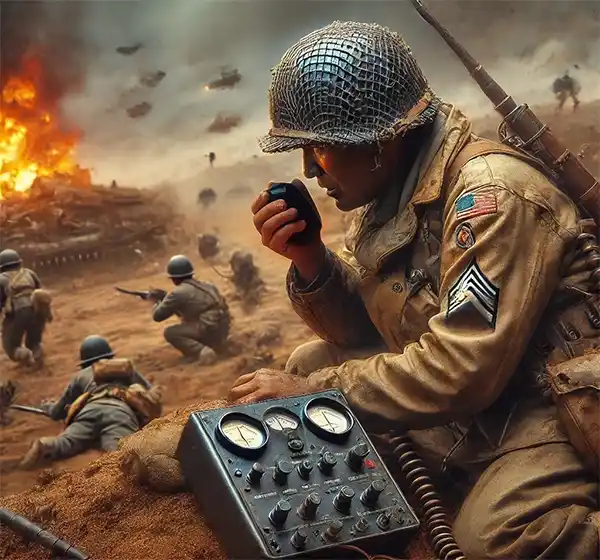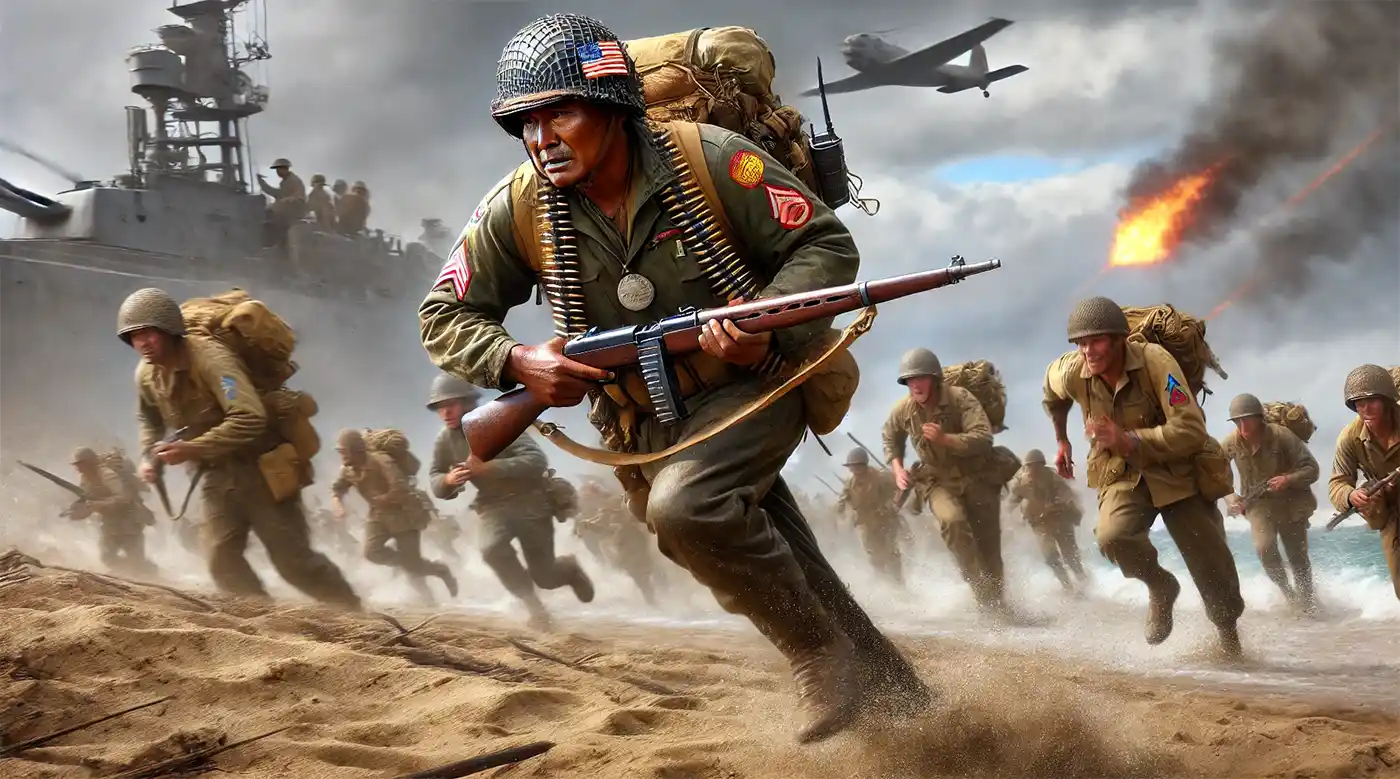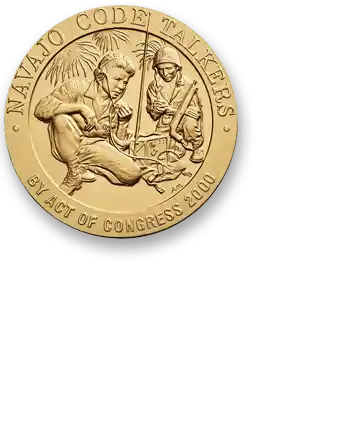Honoring Unsung Heroes of World War II
Navajo Code Talkers Day, observed annually on August 14th, is a day dedicated to recognizing the extraordinary contributions of the Navajo Code Talkers, a group of Native American Marines who played a pivotal role in the Allied victory during World War II. This day celebrates their bravery, ingenuity, and the unique code they created—a code that was never broken by the enemy.
The Genesis of the Navajo Code Talkers
The story of the Navajo Code Talkers begins with a unique convergence of cultural knowledge and military necessity. In the early 1940s, as the United States became increasingly involved in World War II, the military grappled with a critical issue: how to communicate securely in the face of relentless efforts by Axis powers, particularly the Japanese, to intercept and decode Allied transmissions. The U.S. needed a solution that was both foolproof and fast—something that would give them a tactical edge in the war's numerous battles.
The idea to use the Navajo language as a code came from Philip Johnston, a World War I veteran who was not Navajo himself but had spent much of his childhood on a Navajo reservation in Arizona. Johnston was deeply familiar with the Navajo language, which is incredibly complex, largely unwritten, and had very few fluent speakers outside of the Navajo Nation. These characteristics made it an ideal candidate for code development.
Johnston approached the U.S. Marine Corps with his proposal in 1942. Initially, military officials were skeptical. The idea of using a Native American language as the foundation for a military code was unconventional, to say the least. However, after a demonstration in which Johnston and several Navajo speakers successfully transmitted and decoded a message with complete accuracy and speed, the Marine Corps was convinced of the language's potential.
Recruitment of Navajo speakers began almost immediately. However, the selection process was stringent. The military required that the recruits not only be fluent in both Navajo and English but also possess the intellectual capability to quickly grasp and utilize a complex code. Furthermore, they needed to be physically fit and mentally resilient, as they would be deployed into some of the most dangerous combat zones in the Pacific.
 The first group of 29 Navajo recruits arrived at Camp Pendleton, California, where they began the challenging task of developing the code. This group, often referred to as the "original 29," was tasked with creating a dictionary of code terms that could be used to communicate essential military information. They devised a system where Navajo words were assigned to specific military terms, often using creative and culturally resonant metaphors. For example, the word "chay-da-gahi," meaning "tortoise," was used to represent a tank because of the armored vehicle's resemblance to the hard-shelled reptile.
The first group of 29 Navajo recruits arrived at Camp Pendleton, California, where they began the challenging task of developing the code. This group, often referred to as the "original 29," was tasked with creating a dictionary of code terms that could be used to communicate essential military information. They devised a system where Navajo words were assigned to specific military terms, often using creative and culturally resonant metaphors. For example, the word "chay-da-gahi," meaning "tortoise," was used to represent a tank because of the armored vehicle's resemblance to the hard-shelled reptile.
This initial code consisted of about 200 terms and was continually expanded as the war progressed. The Code Talkers had to memorize the entire dictionary, as carrying written versions would have compromised security. The memory work was intensive, but the Navajo recruits, drawing on traditional practices of oral history and storytelling, excelled at it.
The training was rigorous, combining both physical military preparation and intensive language work. The Code Talkers were not only expected to use the code under the stress of battle but also had to ensure that it could be transmitted rapidly and accurately. This was crucial because the speed of communication often determined the outcome of military engagements.
As the war progressed, more Navajo men were recruited, eventually totaling around 400 by the war's end. These Code Talkers were integrated into all six Marine divisions and played a crucial role in every major operation conducted by the Marines in the Pacific theater. Their code, which was never broken, remains one of the most successful communications systems ever devised in military history.
The genesis of the Navajo Code Talkers is a testament to the ingenuity and resourcefulness of both the Navajo people and the U.S. military. It highlights how a deep understanding of language and culture can be leveraged in innovative ways to address complex challenges. The Navajo Code Talkers' contribution is a unique chapter in the broader narrative of World War II, showcasing how traditional knowledge and modern warfare intersected to create an unbreakable code that helped secure victory for the Allies.
Creation of the Code
In 1942, the first 29 Navajo men were recruited to the U.S. Marine Corps to develop this new code. They were tasked with creating a dictionary and memorizing the terms, which they used to encode military communications. The Navajo Code was based on the Navajo language, but it went a step further by assigning words to represent letters, military terms, and even specific tactics. For example, the Navajo word for "turtle" was used to represent a tank.
The code was so effective that it was used in every major operation involving the U.S. Marines in the Pacific Theater, including the battles of Iwo Jima, Guadalcanal, and Okinawa. Despite the intense efforts of the Japanese to crack the code, it remained undeciphered throughout the war.
Impact on the War
The contribution of the Navajo Code Talkers was immense. Their ability to send and receive coded messages with incredible speed and accuracy gave the U.S. military a significant advantage. During the Battle of Iwo Jima alone, they sent over 800 messages, all without error. Marine Major Howard Connor, who was the signal officer during that battle, famously stated, "Were it not for the Navajos, the Marines would never have taken Iwo Jima."
The Navajo Code Talkers' work was so crucial that it remained classified for over two decades after the war, meaning their contributions went largely unrecognized for many years. It wasn't until 1968 that the program was declassified, and the Navajo Code Talkers began to receive the recognition they deserved.
Recognition and Legacy
In 1982, President Ronald Reagan declared August 14th as National Navajo Code Talkers Day, a day to honor not just the Navajo but all Native American code talkers who served in the U.S. military. The legacy of the Navajo Code Talkers is now recognized as a critical part of both World War II history and Native American history.
In 2001, President George W. Bush awarded the original 29 Navajo Code Talkers the Congressional Gold Medal, the highest civilian honor bestowed by the U.S. Congress, while other Code Talkers received the Congressional Silver Medal.
Navajo Code Talkers Day is a reminder of the significant contributions that Native Americans have made to U.S. history, particularly in times of war. It also highlights the importance of language, culture, and ingenuity in solving complex problems.
Today, educational programs, museums, and memorials across the United States work to preserve and promote the history of the Navajo Code Talkers. Their story is taught in schools, and they are celebrated as national heroes who used their unique cultural heritage to serve their country.

How to Observe Navajo Code Talkers Day
Many people observe Navajo Code Talkers Day by learning more about the contributions of the Navajo Code Talkers and other Native American soldiers. Schools and museums often hold special events, including lectures, film screenings, and exhibitions. Visiting a museum that features exhibits on the Navajo Code Talkers or watching documentaries that tell their story are great ways to honor these heroes.
For those who wish to delve deeper into the subject, the Navajo Code Talkers Museum in Arizona offers a wealth of information and artifacts from this crucial period in history.
Navajo Code Talkers Day is more than just a historical commemoration; it is a celebration of courage, culture, and the remarkable ability of individuals to make a difference in the world. The Navajo Code Talkers' story is a powerful example of how cultural knowledge and linguistic expertise can contribute to global events, and it serves as an enduring legacy of their service and sacrifice.
By remembering and honoring the Navajo Code Talkers, we ensure that their contributions are never forgotten and that their story continues to inspire future generations.
Please Share our Content






 The first group of 29 Navajo recruits arrived at Camp Pendleton, California, where they began the challenging task of developing the code. This group, often referred to as the "original 29," was tasked with creating a dictionary of code terms that could be used to communicate essential military information. They devised a system where Navajo words were assigned to specific military terms, often using creative and culturally resonant metaphors. For example, the word "chay-da-gahi," meaning "tortoise," was used to represent a tank because of the armored vehicle's resemblance to the hard-shelled reptile.
The first group of 29 Navajo recruits arrived at Camp Pendleton, California, where they began the challenging task of developing the code. This group, often referred to as the "original 29," was tasked with creating a dictionary of code terms that could be used to communicate essential military information. They devised a system where Navajo words were assigned to specific military terms, often using creative and culturally resonant metaphors. For example, the word "chay-da-gahi," meaning "tortoise," was used to represent a tank because of the armored vehicle's resemblance to the hard-shelled reptile.









 "Sláinte!" is a traditional Irish expression used as a toast, equivalent to "Cheers!" in English.
"Sláinte!" is a traditional Irish expression used as a toast, equivalent to "Cheers!" in English.